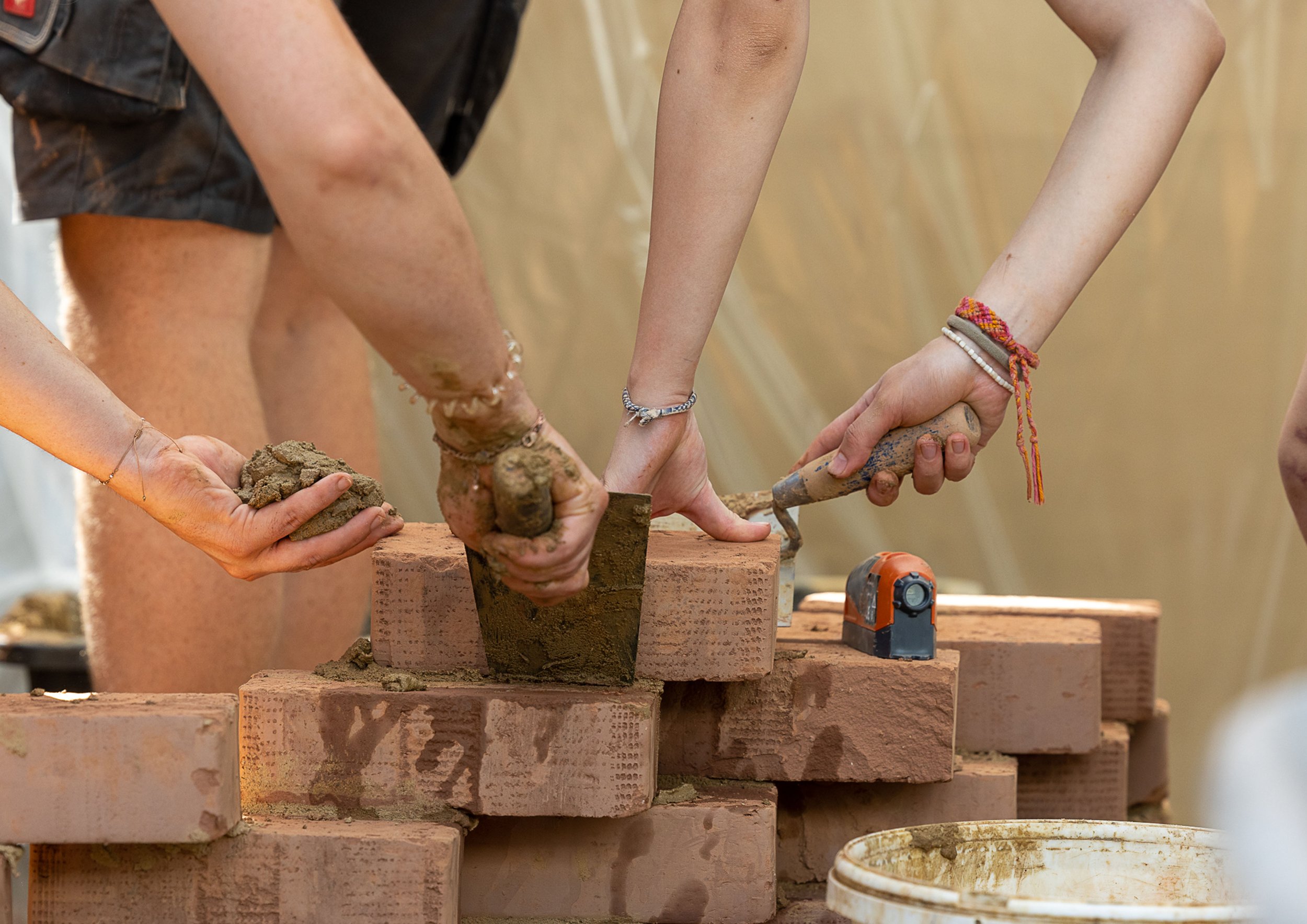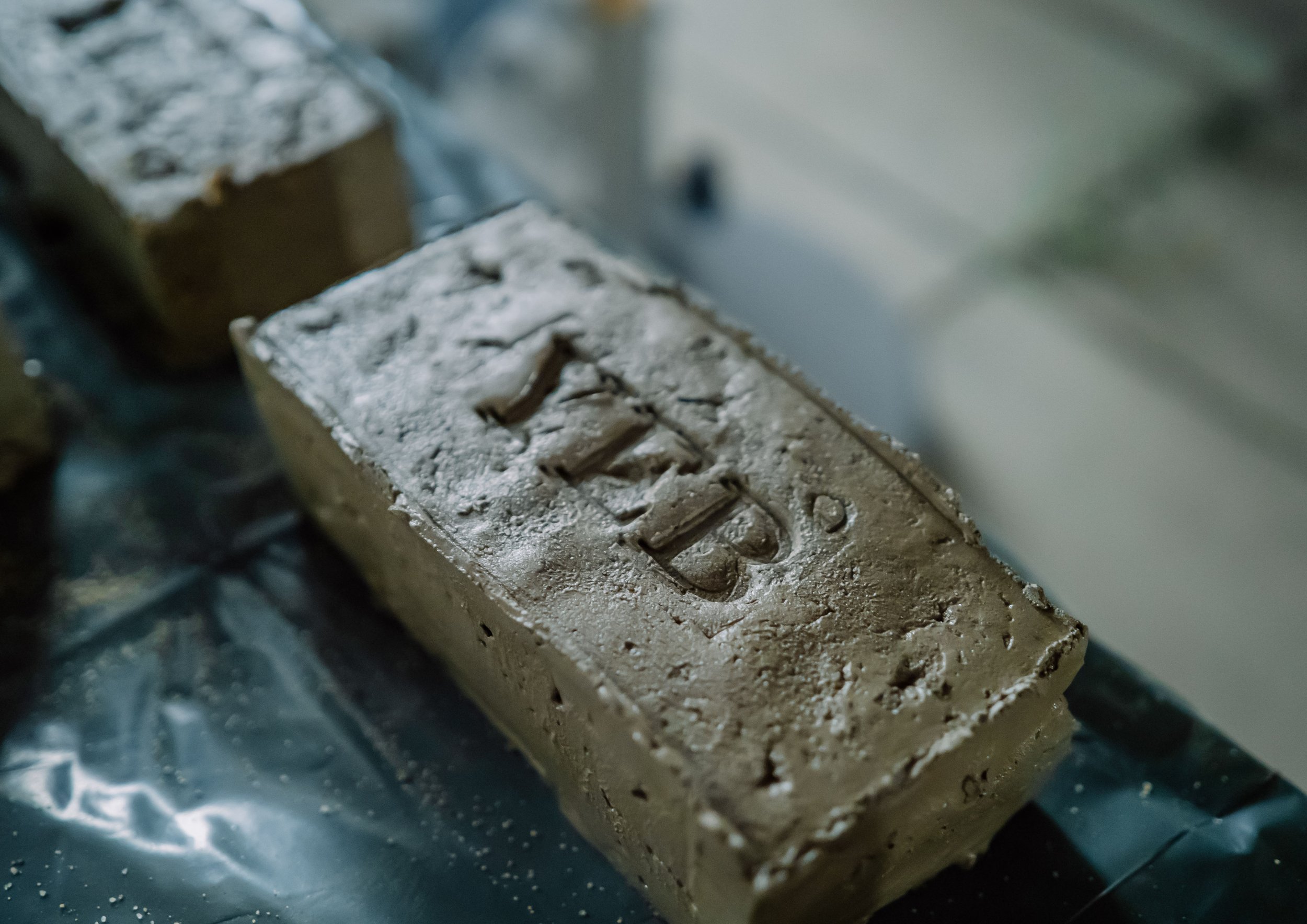Interview #27 Young Earth Builders
Please introduce yourself:
There are many faces behind the 'Young Earth Builders' (YEB) association: we are students, architects, engineers and researchers; above all, we are convinced that clay is an essential building material of the future. We see ourselves as a platform for networking people interested in earth building and as a contact point for earth building projects and research. We are also working on various projects, for example together with experts from the Netzwerk Lehm association on solutions for standard works and a certified training programme in Austria.
A few faces behind YEB © Martin Stockreiter (YEB)
#1 The Young Earth Builders association was founded in 2022. What was your motivation back then? What do you stand for?
We are a group of professionals in the field of architecture. We started back then as a group of 6, because we all did our master's theses focused on earth constructions. Since our first get-together, we have been growing steadily - and started reaching out for more helping hands in the board team. We now have 14 members on the board and more than 80 in our association - and yes, we're totally proud of so many earth enthusiasts. We aim to create more awareness for clay as a building material with our projects.
#2 When you look back at your beginnings, what would you say you have already achieved in the about two years you have been active?
Since we reached many motivated faces - more and more projects came up. We started with workshops for our next generation - the kids at school and kindergarten. We hosted workshops for students as well, at the Vienna Architecture Summer School (VAS). At the end of last year - we had our first workshop for a big architecture office in Vienna. For our YEB members, we managed to offer many presentations and discussion rounds with experts of the field. Over the past two years, we've been able to establish a safe space, especially for our generation, where we meet once a month, learn from each other and everyone can ask any questions.
#3 Particularly now, it is important to speak up in favour of alternative building materials and bring about change in the industry. Why is clay particularly suitable for this?
Clay is circular; it's typically found regionally or directly on-site. Clay also has several important building physics characteristics such as high fire resistance, the ability to absorb and release moisture, as well as smell.
If we want to reduce CO² emissions, we should definitely start using this brown gold NOW!
Rammed earth workpiece © Alex Straub (YEB)
#4 You all come from different backgrounds in construction and architecture. Has your own way of working changed since you joined YEB and became more involved with clay?
This is a good question - it is important for us that we share our knowledge, and we try to educate each other. To almost every topic or problem that arises, we already have someone in our group, who has a solution to it out of experience or through their theoretical engagement with the topic - and if not, we know where to ask for help. All in all, we learn from each other with every interaction. The learning does not always have to be regarding the material itself, but many times it is also about how a non-profit organisation is functioning. But It definitely helps that we all love to get our hands dirty!


#5 You organise various workshops, seminars and lectures, with the youngest participants being just six years old. What is particularly important to you when sharing knowledge?
When we work with kids, we often tell them a short story or ask them questions about what they think clay is. We also have little boxes where the kids can close their eyes and feel what's inside. We put the ingredients of clay in them (sand, little stones, etc.). The last step is getting their hands dirty and creating something out of clay, and this is the most enjoyable part - seeing the reactions of the children. Some hate it, some love it, and some are not sure in the beginning but end up loving it. We also share our own enthusiasm for playing with the material. Back in the years, we, as human beings, were very much in touch with the material clay. There is kind of a natural sense - like a muscle memory - for using it. This feeling and the technical knowledge we love to share, and every workshop participant, no matter what age, benefits from it.
Even the youngest children learn the value of sustainable materials © Michaela Fodor (YEB)
#6 What is one characteristic of clay that surprised you the most and that you only learnt about when you got to know this material better?
Clay is not simply just clay. The varieties of clay and earth are huge, and most of the time, you just need to use your intuition. Depending on the location and mixture, it has different stages of consistency or colour. In one region, the clay may be more sandy, more stony, or pure clay. Therefore, there are many ways of construction - like rammed earth mixes, wattle and adobe, cob, or plaster. Understanding these variations allows for innovative approaches to building, each suited to the unique qualities of the clay available.
#7 How do you see the role of an architect in today's society?
We are part of the building sector, and we all need to take action for change. By advocating for sustainable practices, adopting environmentally friendly materials, like clay, and implementing innovative construction techniques, we contribute to positive transformation within our industry. Each of us plays a crucial role in shaping a more sustainable future within the building sector and the world we will be living in.
#8 How does your environment influence your work?
Many of us are already working full-time or alongside our studies in an architecture office. Unfortunately, these offices are not always involved in sustainability. Therefore, we try to convey the knowledge we share within the association to these offices, to provide impulses, or to encourage people in our environment to rethink. Anyone engaging with the topic automatically influences their surroundings.
Clay becomes colourful: the use of pigments is tried out as part of a workshop © Alex Straub (YEB)
#9 Three things that inspire you at the moment:
Professional relations, our motivated generation and of course mother nature.
#10 What do you currently read, watch, listen to?
Der Weg des Kirschbaums - Erwin Thoma
Utopien für Realisten - Rutger Bregman
Feminist City - Leslie Kern
For music, everything that is upbeat and motivating!
A self-made clay brick as the result of a workshop © Alex Straub (YEB)
Links:
Website: www.youngearthbuilders.at
Instagram: youngearthbuilders
Photo Credits: © Young Earth Builders, Interview Emily Paefgen




